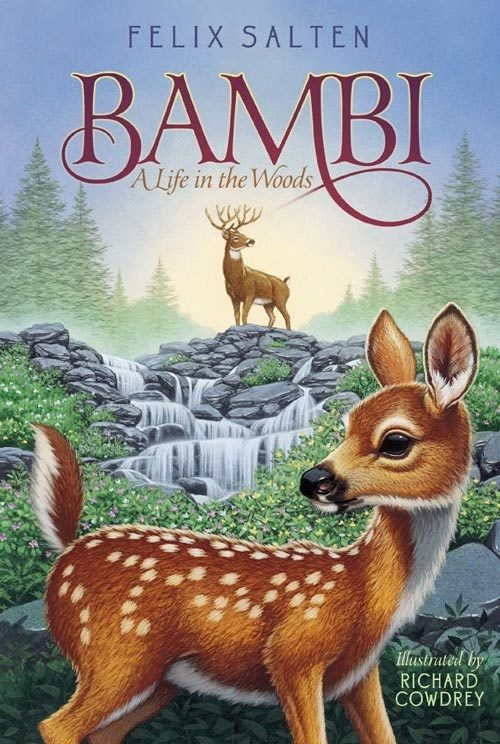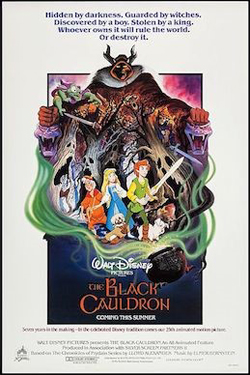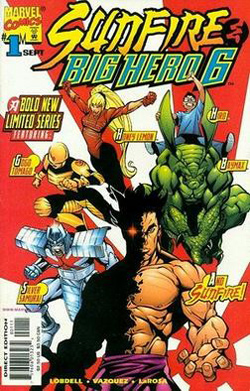Pinocchio Dies, Bambi Gets Shot, and Other Surprising Changes to Disney Movies
Every piece of art starts somewhere. Inspiration can be easily found in original thought, personal experiences, or in older works. It’s not a surprise that a large percentage of films (more than 55% as recently as 2015) began as books and fewer still began as poems. When you have a studio with as long and varied a history as Disney, you’re bound to discover that ideas occasionally come from very unlikely places and with some startling plot developments. With this week’s release of Christopher Robin, itself a new twist on an old series based on books, we look at a few of the more surprising story changes that it took to get some of your favorite Disney films on the screen.

Dumbo Started as a Toy and Book Concept
Dumbo began life as toy and book combo, a prototype called a Roll-A-Book where one would scroll up and down to read the pages. The story was by Helen Aberson with art by Harold Pearl. The marketing department brought the piece to Walt Disney; he skipped the device and went right to the story, buying the rights. Disney’s story department made some changes, including switching out Dumbo’s bird companion for Timothy Mouse. The movie also grew as it went; originally intended to be a short, it expanded as Disney realized its potential. He wasn’t wrong; released in 1940, Dumbo turned out to be the studio’s biggest box office hit of that decade.

Bambi Gets Shot
Two years after Dumbo, Disney released their adaptation of Felix Salten’s novel, Bambi: A Life in the Woods. The Austrian novel published in 1923 and was widely praised, especially for the current of environmentalism that runs through it. The book also has a larger cast of deer and some heavier themes. While Bambi’s mother meets her familiar fate, Novel Bambi also has a cousin named Gobo that dies. In a way, his death is even more tragic, as he was captured and raised by people for a time, only to die when he approaches a hunter under the misconception that humans were now safe. Bambi himself takes a bullet at one point, but survives after being rescued by his father, the Old Prince. On a different note, the book was banned in Nazi Germany under the belief that the relationship between man and deer was an allegory for the treatment of Jews (Salten was Jewish). Max Schuster of Simon & Schuster published the book in the United States and later helped Salten escape Germany; furthermore, he introduced the author to Disney, facilitating the adaptation.
Pinocchio Died by Hanging
Carlo Collodi wrote The Adventures of Pinocchio in Italy in serial form in 1881 and 1882, then published the collection as a book in 1883. Pinocchio was a real jerk. He starts kicking Geppetto before the old man is even done carving him. Soon after, a talking cricket tries to warn Pinocchio about bad behavior, but the animated puppet kills it with a hammer (to be fair, that was an accident). The wooden miscreant goes on to commit several other misdeeds before the Cat and the Fox hang him at the end of the fifteenth chapter. Collodi’s editor talked him into changing the ending, and the writer would compose 20 further chapters, including the puppet’s resurrection by the Fairy with Turquoise Hair, and his eventual transformation into a real boy. When Disney picked up the rights, a wide variety of changes were made to soften the tale. Nevertheless, The Adventures of Pinocchio, bad behavior and all, remains the most translated Italian novel.

101 Dalmatians Met Aliens
Dodie Smith’s 1956 novel The Hundred and One Dalmatians (or The Great Dog Robbery) would seem fairly familiar in most respects. You have Cruella de Vil, you have the same basic plot, and you have other animals, including a sheepdog, involved in the rescue. The biggest divergence is that there are four adult dogs; Pongo and Missis are the parents of the first 15 stolen puppies, and Prince and Perdita are the parents of a number of other missing puppies. For simplicity’s sake, the film script composited the two dog couples and changed human owner Roger from an accountant to a songwriter. That’s all basic adaptation stuff. What makes the origin here so notable is the reason that Disney never adapted the sequel; frankly, it’s weird. Named The Starlight Barking, the novel deals with humanity being placed under slumber by Sirius, Lord of the Dog Star, an alien canine that has come to warn the animal population that they need to escape Earth before nuclear war begins. We are not kidding. Put into the role of spokesdog, Pongo decides that the dogs should remain with their humans on Earth. Having typed that, we kind of want to see that now.

Hey, Why Don’t We Start with the Second Book?
1985’s The Black Cauldron is frequently considered a low point for the animation studio. Intensely disliked by fans of the source novels and a box office loser for the studio, it generally gets praise only for the score by Elmer Bernstein and its early successful use of computer-generated graphics in some scenes. Part of the story problem hinges on the fact that the film is the adaptation of the second book in a much-loved series, The Chronicles of Prydain by Lloyd Alexander. By all accounts, development was a mess from acquisition of the film rights on up until release, with numerous directors, designers, and animators entering and exiting the project, characters being constantly redesigned, and whole chunks of story being excised. One of the animators who had his designs tossed out was Tim Burton. What remains is a blending of the plot of the first two novels in the series with many important characters and villains omitted, while the characters that remained were largely rendered as more child-like and, well, goofy. The Horned King, an amalgam of two novel villains, stands out as a great design, as do the zombie-like Cauldron-born, but the clashing tones just make it more susceptible to criticism.
Fantasia Got Bigger Than Goethe
Fantasia is now regarded as one of Disney’s finest achievements. In the ’40s, it was considered a box office flop. That’s ironic considered it came into being as an attempt to save a budget. Previously, the “Sorcerer’s Apprentice” segment was intended to be a short, an adaptation of the poem by Johann Wolfgang von Goethe, the author of Faust. As work commenced, the budget kept getting bigger, despite conductor Leopold Stokowski volunteering to work for nothing, owing to his enthusiasm for the project. As costs ballooned, Walt Disney envisioned animating a whole concert, rather than one piece, and marketing it as an experimental venture marrying the best of classical music with the best of animation. And while the initial release struggled to make money in 1941, in part due to World War II cutting off distribution in Europe, the film’s reputation has grown and the budget earned back many times over from re-releases, soundtrack sales, and the ongoing marketing of merchandise based on Mickey’s Sorcerer’s Apprentice appearance.
Lady, Meet Tramp
Joe Grant, one of Disney’s story developers, originally suggested a story based on his own Springer Spaniel named Lady; Lady, it seems, acted jealous around the new baby at home. Walt liked the idea in general, but not the original treatments for it. In 1945, Walt read a story in Cosmopolitan called “Happy Dan the Cynical Dog” and realized that Ward Greene’s story of a wisecracking mutt could work with Grant’s Lady. Walt bought the “Happy” rights from Greene. The combined story would go through a number of revisions over the years; in fact, Grant left Disney in 1949, six years before the movie would be released. In a clever tie-in, Disney hired Greene to write the novelization of the film.

Big Hero 6 Comes from the X-Men Universe
Disney’s Big Hero 6 opened to critical acclaim and huge box office in 2014, earning over $650 million worldwide and capturing the Academy Award for Best Animated Feature. What a lot of people don’t know is that Big Hero 6 is an obscure Marvel super-hero team created by the Man of Action writer collective that got their start in an issue of Alpha Flight. Alpha Flight is Marvel’s team of Canadian super-heroes, originally introduced in X-Men #120 in 1979. In a 1998 issue of Alpha Flight, the characters team up with a group of Japanese heroes to stop a threat in Japan. In addition to new characters GoGo Tomago, Honey Lemon, Baymax, and Hiro Takachiho, the roster includes former X-Men member Sunfire and his cousin, the sometime-hero/sometime-X-Men-antagonist Silver Samurai. They soon spun off into their own mini-series as well as team-ups with other heroes, like Spider-Man. After Disney acquired Marvel in 2009, they began to actively develop a number of properties, including Big Hero 6. With Sunfire and Silver Samurai falling under Fox’s license to use the X-Men characters, the Disney film would opt to use two other Big Hero 6 allies/members from the comics in their place: Wasabi No Ginger and Fred (aka Fredzilla). The rest is animation and Oscar history.